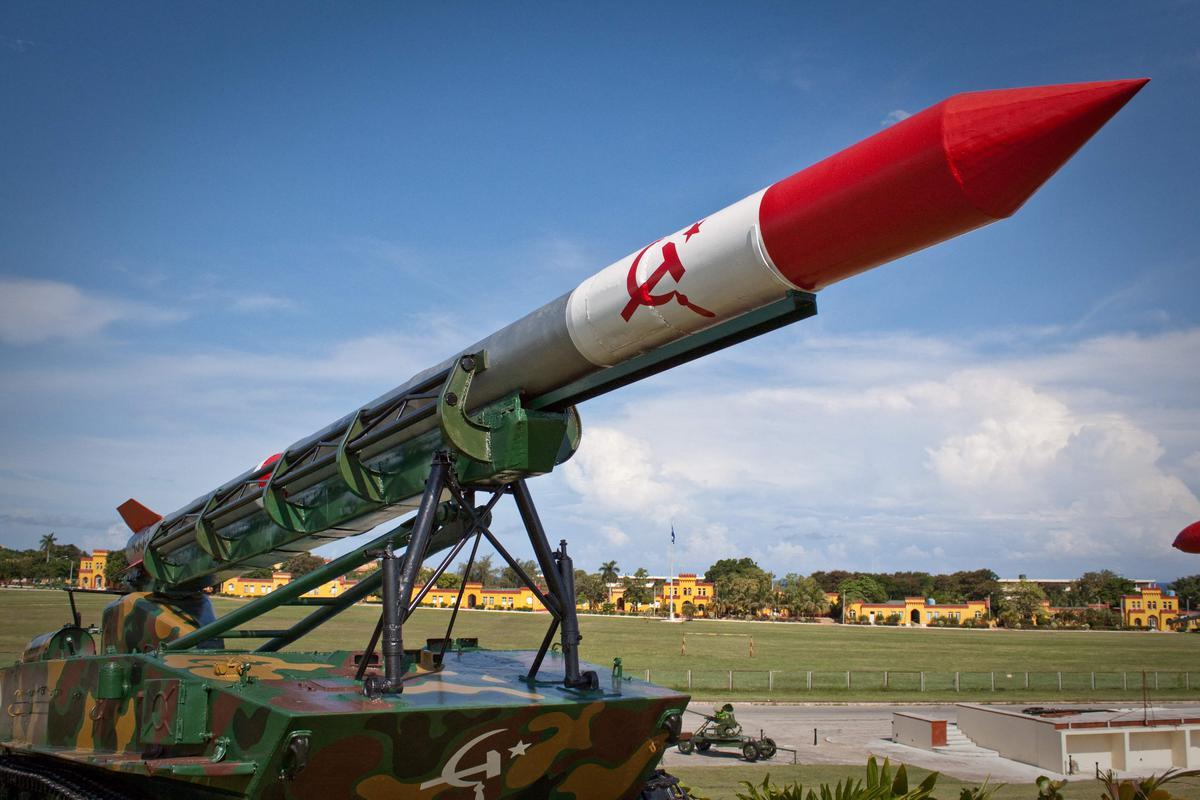
What was the Cuban Missile Crisis? The Cuban Missile Crisis was a 13-day confrontation in October 1962 between the United States and the Soviet Union over Soviet ballistic missiles deployed in Cuba. This tense standoff brought the world to the brink of nuclear war. Why did it happen? The Soviet Union wanted to bolster its strategic position by placing nuclear weapons close to the U.S. How was it resolved? Through intense negotiations, the U.S. agreed not to invade Cuba, and the Soviet Union agreed to remove the missiles. Why is it significant? This crisis highlighted the dangers of nuclear brinkmanship and led to improved communication between superpowers, including the establishment of the Moscow-Washington hotline.
The Cuban Missile Crisis: A Cold War Flashpoint
The Cuban Missile Crisis was a tense 13-day standoff in October 1962 between the United States and the Soviet Union. It brought the world to the brink of nuclear war. Here are some fascinating facts about this critical moment in history.
- The crisis began when American spy planes discovered Soviet missile sites in Cuba.
- President John F. Kennedy was informed of the missile sites on October 16, 1962.
- The Soviet Union, led by Premier Nikita Khrushchev, had secretly placed nuclear missiles in Cuba.
- Cuba's leader, Fidel Castro, agreed to host the missiles to deter another U.S. invasion.
- The U.S. had previously attempted to overthrow Castro during the Bay of Pigs invasion in 1961.
Key Players and Their Roles
Understanding the main figures involved helps grasp the complexity of the crisis. Each leader played a pivotal role in the unfolding events.
- John F. Kennedy was the U.S. President during the crisis.
- Nikita Khrushchev was the Soviet Premier.
- Fidel Castro was the Cuban Prime Minister.
- Robert F. Kennedy, the U.S. Attorney General, played a crucial role in negotiations.
- Anatoly Dobrynin was the Soviet Ambassador to the United States.
The U.S. Response
The United States had to act quickly and decisively to address the threat posed by the missiles in Cuba. Their response was a mix of military readiness and diplomatic maneuvering.
- Kennedy decided on a naval blockade, termed a "quarantine," to prevent more missiles from reaching Cuba.
- The U.S. military went to DEFCON 2, the highest alert level ever reached during the Cold War.
- American U-2 spy planes continued to monitor the missile sites throughout the crisis.
- The U.S. demanded the removal of the missiles from Cuba.
- Kennedy addressed the nation on October 22, 1962, informing the public of the crisis.
Soviet and Cuban Reactions
The Soviet Union and Cuba had their own strategies and reactions to the U.S. actions. These responses were crucial in the escalation and eventual resolution of the crisis.
- Khrushchev initially refused to remove the missiles, leading to a tense standoff.
- Castro urged Khrushchev to launch a preemptive nuclear strike against the U.S.
- Soviet ships approached the quarantine line but turned back to avoid confrontation.
- Khrushchev sent letters to Kennedy, proposing a deal to resolve the crisis.
- The Soviet Union agreed to remove the missiles in exchange for a U.S. promise not to invade Cuba.
The Resolution and Aftermath
The resolution of the Cuban Missile Crisis had significant implications for international relations and future Cold War dynamics. The aftermath saw both superpowers taking steps to prevent such a crisis from occurring again.
- The U.S. secretly agreed to remove its Jupiter missiles from Turkey as part of the deal.
- On October 28, 1962, Khrushchev announced the removal of the missiles from Cuba.
- The crisis led to the establishment of a direct communication link between Washington and Moscow, known as the "Hotline."
- The Cuban Missile Crisis is considered the closest the world has ever come to nuclear war.
Lessons from the Cuban Missile Crisis
The Cuban Missile Crisis taught the world valuable lessons about diplomacy, communication, and the importance of nuclear disarmament. It showed how close humanity came to a catastrophic war and highlighted the need for clear communication between nations. The crisis also emphasized the significance of intelligence gathering and military readiness. Leaders like John F. Kennedy and Nikita Khrushchev demonstrated that even in the face of immense pressure, negotiation and compromise could prevent disaster. This event remains a crucial study in international relations and crisis management. Understanding these lessons helps us appreciate the delicate balance required to maintain global peace. The Cuban Missile Crisis serves as a stark reminder of the potential consequences of nuclear proliferation and the ongoing need for diplomatic efforts to resolve conflicts.
Was this page helpful?
Our commitment to delivering trustworthy and engaging content is at the heart of what we do. Each fact on our site is contributed by real users like you, bringing a wealth of diverse insights and information. To ensure the highest standards of accuracy and reliability, our dedicated editors meticulously review each submission. This process guarantees that the facts we share are not only fascinating but also credible. Trust in our commitment to quality and authenticity as you explore and learn with us.


